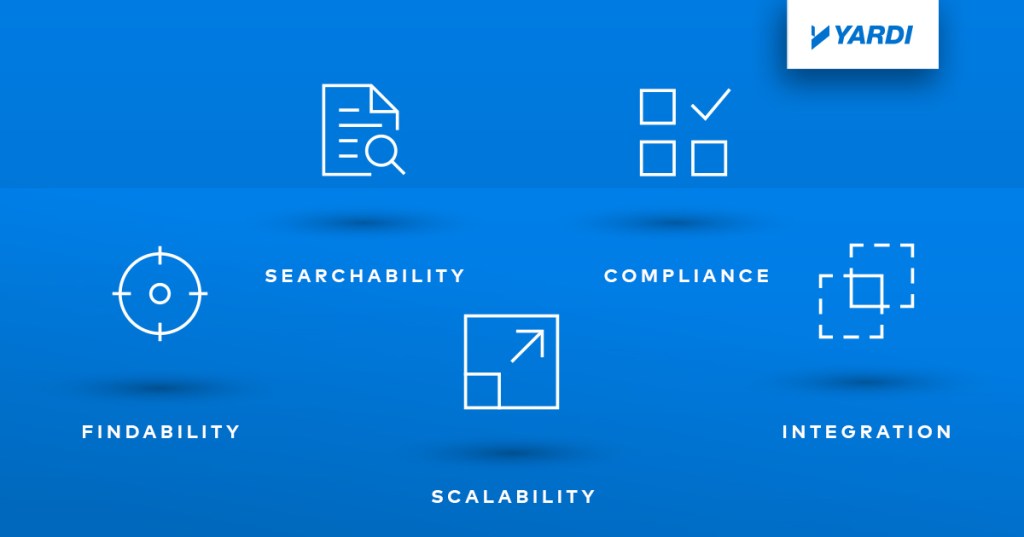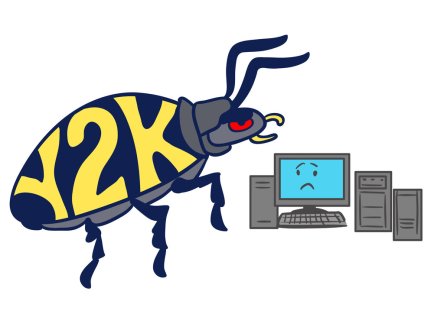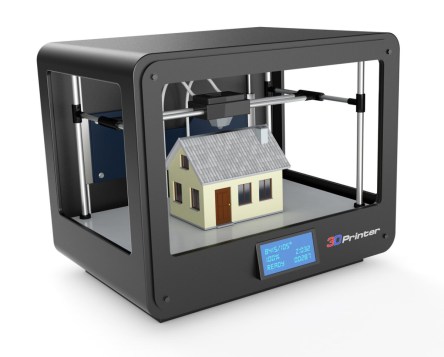The latest gate opener technology is essential for property owners or managers who want to control gate access at properties. A modern solution working at many properties is WiFi and Bluetooth gate controls, especially those with many daily users. Let’s review some of the best WiFi gate controllers to buy. WiFi gate controllers connect to the property’s WiFi and open and close the gate once users present or enter the required credentials. Often, users can connect using their smart devices, key fobs and code access. In addition, property owners or management can monitor entry to the gate because of the WiFi connectivity. Use Bluetooth to access gate controllers when WiFi is down or unavailable. Ghost Controls. Ghost Controls serves the USA and Canada. Ghost Controls offers a bundle package with WiFi and Bluetooth. It features mobile device controls that monitor gate status. It can be used on multiple gates and can run on solar power. Ghost Controls are low-voltage and solar optimized for environments without access to AC power. Reviews boast of its customer service and online and telephone support. It also includes limited lifetime warranties. Ghost controls are also an excellent choice for mixed-use and commercial properties. USAutomatic. USAutomatic is weather-resistant and allows users to securely open, close and monitor the gate from anywhere in the world. It also features WiFi and Bluetooth and includes LED indicator lights for power, WiFi connectivity, and activity. USAutomatic does not include subscription fees. It also will send notifications if the gate stays open longer than the programmed allotted time. USAutomatic works with Alexa, Google Assistant, Samsung SmartThings and Siri. iSmartgate. iSmartgate PRO includes a WiFi controller and a wireless magnetic sensor. It includes key features such as video, user management, an audio player, three gates control...
Protecting Packages
Tech Solutions for Porch Piracy
Happy holidays! Tis the season for festive celebrations and heartfelt gift giving. Unfortunately, along with the year-end holidays comes peak season for porch piracy. A porch pirate preys on parcels and steals them from homes. These thieves can strike in any neighborhood at any time and target all sizes of packages. Porch pirates are opportunistic and work quickly. Package theft has been a persistent affliction since online shopping has taken over, and porch pirates show no sign of yielding despite porch theft being a felony in many states. According to a recent statistic from Security.org, 44 million Americans have had a package stolen in the last three months. Porch pirates strike regardless of climate conditions, but some states are plagued by porch pirates more than others. Forbes compiled a list of the worst states with porch piracy packages stolen—New Hampshire ranked first, and Florida ranked last. Luckily, by incorporating some simple measures, you do not have to fall victim to these thieves this holiday season and beyond. Let’s explore some cutting-edge technologies and practical tips to ensure safe package deliveries this season. Outsmart porch pirates with clever strategies such as choosing secure delivery options, using delivery lockers and coordinating deliveries with neighbors to minimize the risk of porch theft. In mixed-use buildings, delivery lockers are the best option for residents and tenants. If working in an office building all day, have the necessary packages delivered to the office. There are various smart mailboxes and high-tech security devices for protection from porch pirates and environmental threats. Perhaps you are pretty fond of your mailbox but would like some smart features. Ring WiFi smart mailbox sensor fits inside the mailbox and will automatically send an alert to your phone in real-time whenever the mailbox is open....
Nobel-Level Science
Within Your Reach
Nobel Prizes, especially those awarded in the science categories, are often unfathomably exotic to the average consumer. But Nobel-level tech lies no farther away than the computer on your desk or the smartphone in your hands. As an MIT blog post noted in October, “Regardless of what display you’re using to read this, it is almost certainly powered by … technologies with roots in the Nobel Prize in Chemistry or Physics. (Even if you’re using a CRT display for whatever reason, the 1905 Nobel Prize in Physics was awarded for the invention of the cathode ray tube.)” The list of Nobel-winning tech that’s used in smartphones and other present-day devices dates at least to 1909, when Italian Guglielmo Marconi and German Karl Ferdinand Braun received the Physics prize for wireless telegraphy. The list of Physics and Chemistry winners since then encompasses the invention of integrated circuits, transistors, charged coupled device sensors in cameras and more. Blue light and lithium batteries In 2014, for example, three researchers from universities in Japan and the U.S. earned their Nobels for creating blue light-emitting diodes, or LEDs, which consist of electrons moving through several layers of semiconducting materials and directly converting electricity into light without the heat-waste of a traditional bulb. Building diodes that emit red and green light from their semiconductors had been achieved years earlier, but producing blue light, a necessary component of white light, was elusive. The three light colors combine to make the bright white produced by LED lightbulbs, which are more efficient and longer-lived than traditional bulbs with filaments. It’s also present in your smartphone’s flashlight and displays. “The first bright blue LED in the early 1990s marked one of … the most important breakthroughs in lighting technology,” says the MIT blog. The...
From Cell to Smart
50 Years of Mobile Phone Progress
Consumers are agog over the Samsung Galaxy, Motorola Razr, Apple iPhone, Google Pixel and other advanced smartphone models. These devices can make calls, send texts, take photos, respond to verbal instructions, provide a games platform, access digital assistants, navigate routes, generate budgets – the list of capabilities gets longer just about every day. Starting in 1908, when a U.S. patent for a wireless telephone was granted, mobile phone capability evolved into two-way radios and networks with very powerful base stations that covered wide areas; signals weren’t passed among cells. Motorola prototype A major milestone came in 1973, when Motorola mass-produced the first handheld mobile phone. This was 0G of the 5G technology progression. Motorola engineer Martin Cooper initiated the first handheld cellular phone call in New York City on April 3 of that year using a 2-1/2 pound prototype nearly the size of a shoebox. “I’m calling you on a personal, handheld, portable cell phone,” Cooper told the call’s recipient, an executive at Motorola competitor Bell Labs. Motorola launched commercial cell phone service 10 years later with its 2-pound DynaTAC 8000x, which retailed for $3,500—$4,000. In the 1990s the modern cell phone took shape with much smaller and more user-friendly products. “Roughly every ten years since 1979, each newer generation has changed how we communicate, further improving our way of life,” says CENGN, a coalition of Canadian technology interests. As of 2021, 97% of Americans owned some type of cell phone, Pew Research Center reported. Smartphones take off Between 2004-06, “smartphone” entered the vernacular. That’s when, according to British IT services provider Air IT, “phones began to seriously bridge the gap between something you used to make calls and send text messages, to something altogether more useful.” The 50-year progression of cellular technology generations,...
AI Engineering
Can it end extinction?
The advancements in today’s technology are incredible. Biologists are now discovering AI-powered genetic engineering to de-extinct animals of the last Ice Age, from wooly mammoths to the Tasmanian tiger and even the return of the dodo bird. Let’s discuss how they are doing this and what simulations and optimizations will be used to make this all possible. Scientists and biologists are starting with the comeback of a wooly mammoth to help the endangered African elephants. These elephants have declined by nearly 90% in the past three decades. Poaching took more than 100,000 African elephants between 2010 and 2012. Using genome reconstruction optimization, AI algorithms optimize reconstructing extinct animal genomes from fragmented DNA. AI could assist in filling gaps, identifying suitable genetic material from related species and predicting genetic issues. An Asian elephant with wooly mammoth DNA would be more of a hybrid animal that looked and acted like a mammoth but shares DNA with the living species. Ecosystem integration simulations create AI-driven simulations that predict how reintroduced extinct species might influence food chains, habitats and biodiversity within their ecosystems. This could help guide decision-making on whether to proceed with de-extinction efforts. As far as genetic diversity is concerned, ethical and social implications are a part of the assessment. AI tools can gather and analyze public opinions, ethical concerns and potential social impacts of bringing back extinct animals, which will help scientists, biologists, and policymakers make informed decisions about de-extinction projects. For example, de-extinction research in Neanderthals could start a new chapter in the search for antibiotics and other valuable biomolecules, allowing scientists to harness AI and systematically explore long-extinct organisms to help us better understand life’s molecular diversity and sequence space. Genetic diversity enhancement uses AI algorithms to guide the selection of individuals for...
Making It Real
Can Holograms Enhance Work?
Holographic technology – once the stuff of science fiction, enabled with Nobel Prize-winning innovation, increasingly used in fields ranging from education and military planning to medicine and entertainment – is receiving attention as a potentially transformative workplace technology. Holograms are produced by an imaging process in which lasers capture and replicate objects into detailed three-dimensional projections of diffracted light that preserve the depth of the original physical source it displays. It is, one observer says, “the intersection of light and matter, designed to be observed from all perspectives.” The current state of the art comprises two laser beams collaborating to create solid light holographs in 10 billion pixels per square meter in ultra high definition. Hungarian-British physicist Dennis Gabor pioneered holographic technology, winning a Nobel Prize in Physics in 1971. Providing a ‘magic window’ Holographic technology “works like a magic window, where users can talk, gesture and make eye contact with another person, life-size and in three dimensions,” says Andrew Nartker, director of product management at Google, whose Project Starline aims to create 3D projections that give workers to appearance of speaking to each other across a window. Star Wars aficionados may have been introduced to holograms with Princess Leia’s distress call in the movie franchise’s first installment in 1977. An ABBA “reunion” in 2022 featured the band’s members projected as holograms. (Certain other concert projections of music legends reflected 2D images off a semi-transparent surface in an effect known as Pepper’s Ghost. Lacking depth and volume, they weren’t true holograms, contrary to popular belief.) Expanding business applications And now, this technology is providing new resources for the business world. For example, holograms can give retail shoppers 360-degree views of items. Models created with holograms help military decision-making by offering detailed visual assessments of...
Empowering Property Management
With AI Synergy
Artificial Intelligence was an important focus at the 2023 Apartmentalize conference. Utilizing AI will empower property management companies, but what is the difference between AI in operations? Augmented versus generative AI is used differently for specific tasks for property management. Let’s explore a synergistic approach that combines augmented and generative AI for enhanced customer experiences and drives operational efficiencies. Revolutionize property management with generative AI that emphasizes creative output in marketing efforts, including realistic property visualizations, creating virtual tours or personalized marketing content. For example, Fidelity vice president Sarah Hoffman recently spoke about how generative AI will improve efficiencies and creativity: “Generative AI can definitely take efficiency to the next level.” In contrast, augmented AI focuses on automation and data. The collaboration of both AIs can optimize property management workflows, reduce costs and improve productivity. Use AI in property management for leasing, lead nurturing and training employees. Generative AI can streamline resident communications and maintenance requests. ChatBots are being used at every turn for customer service and can also assist with leasing new residents. Most can even understand slang or misspelled words. A ChatBot will also help with lead nurturing by creating a heatmap so management can see what areas of the website prospects spend the most time on. ChatBots can answer more questions for maintenance requests so residents can say precisely what is needed for the work order. Use generative AI for marketing to furnish a vacant unit so a prospect has a better visual. Generative AI will also help collect pre-qualifications with an improved qualification rate. Save several hours in the office but remember that AI is here to help and not create more work. Unfortunately, with the good comes the bad. In a recent article by CNBC, generative AI is creating new cybersecurity threats. Generative AI is used to create more convincing scams with fake written content, digital content and documents. Do some research to avoid rising AI-based threats and consider an AI security tool. AI in leasing will also help with trends in the market, revenue and balancing supply and demand. Augmented AI is used for data analysis with a human touch. Augmented AI can be used for risk mitigation–facial recognition, and security. AI-powered surveillance systems and fraud detection algorithms ensure residents’ safe environments and property assets. Augmented AI will catch fraud early and identify potential risks or glitches. Send renewals easily and craft offers with data on market trends. Augmented AI can also help with marketing to predict demographics, location and movements. Use it for screening to allow more residents and acceptance rates. Student housing is already implementing AI and specialized technology, such as AI-powered surveillance systems, which is the evolution of technology for the multifamily sector and the type of business that should be embraced. “The new wave of renters are students, and students want to avoid talking to humans and prefer text, email and chats with more efficiencies,” said Connie Aldape, director of leasing centralization at Cushman and Wakefield. Augmented and generative AI can empower property managers by automating routine tasks, providing data-driven insights and enabling continuous learning through AI-driven training and knowledge-sharing platforms. Remember, AI will give support, but it will never replace humans entirely. Having that human touch will still be essential. Nobody can predict the future, but augmenting humans with AI will soon be a new...
Fur & Bytes
Unleashing Technology for Pets
Let technology do its work and have happy residents, less pet damage, plenty of renewals and profitability. Earlier this month, Apartmentalize highlighted the latest technology property owners and companies are embracing for their pet residents. Let’s explore these opportunities for innovation. Paws and Effect. Many property management companies are using the latest technology for their furry residents and seeing immense success. Starting with pet DNA testing, management can use these tests and know which poop is coming from which dog. With this knowledge, management can decide whether to issue warnings to pet owners or give them an extra monthly fee. This eliminates all un scooped pet waste around the property, ultimately leading to happier residents. Pet screening has also been implemented in some properties, giving prospective residents a quick survey that will track vaccination records and behavioral affidavits. Those who score a lower score must pay a high pet rent. Those with a high score can have zero to minimal pet rent. This allows property managers and owners to set high standards, eliminating the need for breed restrictions and allowing for more pet inclusivity. Those who offer no pet rent with high screening scores will be happy and likely renew their lease contracts. Plus, word-of-mouth marketing from grateful tenants will be significant. Another way to waive fees or pet rent is if those looking to be pet owners adopt a rescue dog or cat. Host a pet adoption day at the property. Those who adopt that day can get a discount or waived fees and rent. This not only helps the community for those pets in need but also shows that management cares and wants to see residents happy while living at the property, which will lead to retention and profitability. Oppawtunities to innovate....
Embracing Bots
For Property Maintenance
Being a property owner can be a laborious job. Summer is fast approaching, so lawn care is a top priority. Unless you have the budget for a lawn care and landscaping service, Artificial Intelligence in recent years has made some remarkable robots. Here are some robots to use this summer to make yard work easier. First, to start with the lawn itself. If owning a large property and needing assistance maintaining the grass but hired help is not working out, have no fear. Imagine mowing the lawn was as easy as clicking a few buttons on your phone. This is a reality with robot lawnmowers that work the same as robot vacuum cleaners for the interior. Robot lawnmowers are unique because they learn the environment using a smart map or GPS. It mows like people, navigating the yard and cutting efficiently in straight back-and-forth lines. If the battery runs low, the robot will return to the docking station, charge automatically, then return to finish the lawn. Have total control over where the robot goes so that it will stay on course and out of the neighbor’s properties or in garden beds. Of course, there are some downsides to lawn mower robots, especially for those living in hilly, sloped land, so keep that in mind. There are a plethora of robot lawnmowers to choose from now but read reviews and choose one that would be best suited for your property lawn care needs. No green thumb is required to have an impeccable exterior with flowers and native plants for the bees and butterflies. Move over garden gnomes because the Hexa all-terrain robot is here. Again, it is easy to control all from a smartphone. It can walk, climb, take photos and videos, ramp up security,...
Subscriptions as a Service...
Business Model Evolves
The subscription economy is here to stay. What does this mean for businesses and consumers? A successful strategy is for companies and consumers to subscribe to services rather than buy products. Let’s explore how subscription services are quickly evolving. Subscription business model concepts. The pandemic accelerated the growth of the subscriber model at a rapid rate. Those businesses that are not implementing this could miss out or lose to their competitors. Once companies or consumers shift to subscriptions, they rarely convert back. It’s a transformational change that is happening throughout the economy. Companies implementing this model correctly can predict revenue and profitability with much more accuracy and targeted focus. Businesses are upgrading to subscription models to ensure they do not lose out on the benefits of an ongoing consumer experience. In a high visibility example like Microsoft 365, consumers can reap the benefits of the software with a piecemeal monthly or annual fee instead of shelling out thousands of dollars every few years. Cancellations are the biggest threat to the subscription model. However, embracing cancellations can lead to greater consumer retention and increase business transparency. Moreover, by surveying those who cancel, business leaders can find a depth of data to help shift their approach to renewals and consumer loyalty. To retain consumers, businesses must create an experience that speaks for itself. Consumers can get a product anywhere but stay loyal for the expertise and community feel a brand provides. While it is essential to plan for new subscribers, it is just as important to focus on retaining current ones. Businesses should focus on how to build long-term, sustainable relationships with consumers focused on what they want with complete transparency. Utilize tactics that create meaningful connections with subscribers. Surveys, social media engagement, and listening to...
Document Management Musts
Five Features You Need
You’re likely familiar with the challenges of managing documents across your business, both for your staff and external users. A few of these challenges include maintaining consistent folder structures, managing security and permissions, integrating content and users, finding documents quickly and tracking multiple versions over time. You can overcome these challenges by storing and sharing content in a unified system that leverages SharePoint and the cloud. Even better is a solution that integrates with your property management platform for a single source of truth. Centralizing key documents and enterprise information in a secure, mobile-enabled system will help you increase communication and productivity across your business. Read on to learn five big benefits of a full-featured document storage platform. Five features to look for in a document management solution 1: Searchability Finding documents using native SharePoint functions is even more effective when coupled with AI meta data tagging. Adding OCR (Optical Character Recognition) capabilities that convert images of text into a machine-readable text format will make your search for elusive documents even more powerful, giving you the ability to look for keywords within a document. 2: Findability Organization for your documents is key. Implement a taxonomy with a uniform structure that makes it supremely easy to locate documents. Automation will ensure consistency and maintenance of your folder structures. Just as going to a big box store at any location in any state will give you the same layout and experience, a taxonomy that consistently organizes your documents to ensure a familiar experience makes information easy to find. 3: Scalability Without a document management system, managing information across an organization is a laborious undertaking. With an automated solution, it’s easy to maintain taxonomy and security for your documents on a large scale. Automation organizes your documents within hours, and when integrated with Yardi Voyager, you can access documents from a single source of truth. 4: Integration With seamless integration of your document management system with your Voyager property management system and other Yardi platforms (including Yardi Elevate, CommercialCafe and VendorCafe) it’s easier for approved users inside and outside your organization to upload files. Security is managed in Voyager. Depending on the outside user, such as a vendor, when they upload documents they will not be aware that the files are stored in SharePoint behind the scenes. Inside your organization, users will be able to interact with the files in a SharePoint setting where they can leverage all of its features. 5: Compliance Laws and regulations are changing to require less paper and accept more digital documents. Maintaining compliance and security in this evolving digital environment is a necessity. Document management in SharePoint has many features for compliance including retention policies, workflows and the ability to integrate with third-party tools such as DocuSign to meet regulations. Ready for scalable enterprise content management that delivers a single source of truth across your business? Yardi has a solution that enables you to take advantage of all the great features listed above. Join a Yardi Document Management for SharePoint webinar or learn...
The Metaverse
Real Estate's New Frontier
Is the virtual real estate market the new frontier thanks to the metaverse? Investors are now looking at metaverse real estate, an online platform where people can buy, sell, and lease virtual property, according to recent article in the New York Times. A general contractor and NFT (nonfungible token) collector, Gabe Sierra, in Miami, offered his latest creation, an 11,000-square-foot mansion, but to spice up the deal, he provided the exact twin home in the metaverse. The property hits the auction block this month, and Sierra is hoping for a sale price of around $10 million. “It’s a project that blends the line between physical and digital to the furthest extent that I could go on a residential home,” said Sierra. “It pairs a real-world build and expands on it in the digital space. It will make much more sense as these technologies get more immersive.” Financial transactions in the metaverse are handled in cryptocurrency and powered by the blockchain, a digital distributed public ledger that eliminates the need for a third party like a bank. According to Technavio, the metaverse real estate market is expected to grow by $5.37 billion by 2026. In the Sandbox, one of the most popular metaverse worlds, much of the virtual land has been purchased by global corporations like Adidas, which is there to sell products. The total land value in The Sandbox was estimated to be $167 million last year. While a parcel is sold for about $400, there is a secondary market where prices can be many times that. Proximity to land owned by celebrities and big-name brands drives up prices. One buyer paid $450,000 to become Snoop Dogg’s neighbor in “Snoopverse.” “Land is becoming the infrastructure of the metaverse,” said Sebastien Borget, co-founder of the...
Tech Trends from CES
Let's Get Nerdy
Significant changes in technology are coming. At the 2023 Consumer Electronic Show (CES) in Las Vegas, recognized for underscoring the latest technology, Steve Koenig, Consumer Technology Association vice president of market research, highlights the newest tech-savvy trends. “Cybersecurity, cloud, artificial intelligence, and robotics are all part of it and underpins the effort and the global economy,” Koenig said. This includes speed and increased productivity benefits, improving worker safety, and optimizing space. He continues, “The metaverse is closer than you think. Metaverse is still a speculative term but make no mistake, this is a real trend, just as the internet was a real trend in the early 1990s, even though many of us didn’t know what it was. That’s the same dynamic manifesting around the metaverse right now.” Advertisements and how consumers shop look different today compared to 20 years ago. Using the metaverse and online shopping, consumers can push a shopping cart in “an elevated sense of immersion,” said Koenig. In addition, virtual meetings with sales associates when purchasing a new computer or shoes will be more common, allowing the sales representative to show the features in detail. Many are turning to electric cars with technological advancements and more autonomous transportation advancements. With a decline in truck drivers, soon the answer will be self-driving trucks, predicts Koenig. “Humans are nice to have. Technology is the answer.” Robots are becoming more advanced, especially in sustainability. For example, farmers are now using more windmills, farming robots, soil sensors, and intelligent silos. In addition, John Deere won the 2023 Best of Innovation at the CES show for a fully autonomous tractor. Regarding the gaming world, data shows that there are over 164 million self-described gamers in the US market, according to research from the CES show. However,...
Multifamily Marketing Meets AI
Quality systems are key
The multifamily industry has many options when it comes to solutions that claim to deliver optimal results for both clients and renters. But which ones actually do? According to Multi-Housing News, the answer lies in automation and artificial intelligence. Chatbots powered by natural language and AI that extend beyond predetermined conversations, for example, offer communities the chance to create meaningful online engagements, all while increasing conversions and advancing innovation. But not all prospects want to engage with a chatbot — at least not at first. You need to be aware of how leads find your website, and understand that real engagement — the kind that converts — might be infrequent. So when it comes to using AI-based systems for multifamily marketing, aim for quality over quantity. Check out an excerpt: “The visitor has to hit the website first, and they have to elect to engage,” Paul Yount, industry principal at Yardi, explained to Multi-Housing News. “There’s a fairly large segment of the population that doesn’t want to engage with a chatbot; they know it’s a machine, and they think that it won’t be helpful.” Overall, the quality and reliability of leads matters infinitely more than the number of engagements, something facilitated by an acute use of automation. RentCafe Chat IQ is an AI-powered bot that features active, engaging responses, such as automated email responses and phone calls. “You really have to go beyond the chat for both business and operation efficiency and make sure that you’re getting consumers from all those different channels,” Paul Yount detailed. “The volume of chat is notably lower than email and web leads…much lower than phone calls, emails and potentially [text-based] leads. Consequently, such engagements significantly enhance lead quality and potential.” Two things change the game for good when it comes to converting prospects and keeping residents happy with a chatbot: natural language processing and omnichannel features. Let’s dive in on what makes each so important. Natural Language Processing A chatbot that can overcome casual language, spelling errors and grammar mistakes can simulate a more humanlike conversation. Natural language chatbots open opportunities of flexible conversation, enabling customers to ask questions pertaining to policies, schedule tours and ask much more in their own way, compared to chatbots that limit customers with predetermined questions. This enables your chatbot to deliver personalized customer service, meeting your customers where they’re at, every time, no matter when they reach you. Omnichannel Features More often than not, leads slip through the cracks because their initial inquiries were ignored. According to Yount, “Nobody says, ‘If only we had more leads!’ You don’t have a lead quantity problem; you have a lead quality and qualifying problem, one where the leasing team simply can’t handle all the inbound communication.” But keeping a tight grip on inbound communication is possible. How? With a smart bot that can field questions across multiple channels. A bot that can automate responses to emails, texts, chats and calls frees up your staff and increases the possibilities of gaining quality leads. Next Steps Interested in the future of multifamily chatbots? Read the rest of the article to find out more about how automation and AI-driven chatbots can help you convert prospects, take care of residents and save staff...
Bug of the Century
Could Y2K Happen Again?
Readers of a certain age might recall the buildup to Jan. 1, 2000, as an exercise in high drama. The object of concern was the so-called Y2K bug, the fear that hardware and software systems would stop functioning if they interpreted Jan. 1, 2000, as the first day of the year 1900. The issue was a legacy of computer programs from the 1960s, when engineers used a two-digit code for the year, omitting “19” to save data storage space. 2000 was comfortably far away then. But as that year approached, the concern grew among experts that the faulty interpretation of “00” would wreak havoc on everything from national defense systems and energy grid infrastructure to home mortgage calculations and factory operations. Corporations and governments formed task forces, planned and tested for years leading up to 2000. Large businesses in the U.S. spent an estimated $100 billion creating Y2K compliant programs. Boeing conducted a series of test flights with systems simulating a 2000 rollover to safeguard its 10,500 jets in service worldwide. AT&T spent $650 million to bolster its phone system. There was a fair amount of worry, too; IBM attributed its 9% fourth-quarter earnings drop in 1999 to large corporate customers delaying computer purchases. Smooth start to the millennium On Jan. 1, 2000, everything held together with only minor glitches attributed to Y2K. The U.S. Federal Housing Administration listed incorrect dates on a few reports. A Berlin opera company’s system made people born in 1995 appear to be 95 years old, rendering their parents ineligible for government-mandated subsidies. A video store in New York state foisted a $91,250 charge on a customer who, according to their computers, returned a rented movie 100 years late. There were some airline flight delays and a few other snafus...
And a App-y New Year
Four apps to enhance productivity in 2023
It’s the end of the year, and you are starting to feel sluggish. Scrolling social media endlessly or putting off tasks are everyday bad habits that society picks up in December. Why not start now with some New Years’ resolutions and download some productivity apps that can help get you out of that slump? We’ve done some research and found a few apps that can help. Here are four apps to increase productivity for the end of the year and the start of next year: 1. Todoist App (Windows, Mac, iOS, Android, Chrome, Safari, Firefox). Todoist is a task management tool that promises to make complex to-do lists manageable. This app is for individuals, helping you track your tasks and ensure nothing gets forgotten. Key features of Todoist include task management, prioritizing tasks, project goals, and reports. Todoist offers a slick, cross-platform interface that makes it quick and easy to manage functions if you struggle to keep on top of your to-do list. 2. Trello App (Windows, Mac, iOS, Android, and web). Trello is like Todoist, except it is for collaborative teams. Tasks are added and organized on “to-do,” “going,” and “done” statuses, which helps teams keep track of progress. Tasks can be grouped into boards and cards, which contain multiple functions in themselves. Individual duties can be assigned to groups or team members with deadlines and checklists. Key features of Trello include project management, to-do lists, Trello boards, working with anyone, and instant messaging. Instant messaging makes it easy for teams to communicate and collaborate, especially in today’s world of working from home. 3, Zapier App (Windows, Mac, iOS, Andriod, and web). Zapier is a simple automation tool that can save teams vast amounts of time on repetitive tasks and switching between different apps. Zapier sends data between apps like Trello and Outlook, so emails are automatically sent out when anything changes in Trello. Add all these automations together, and your team will collectively spend much less time on menial tasks to focus on more critical ones. Key features of Zapier include the integration of apps, automation of tasks, and custom automation. Zapier is a very gentle introduction to business automation, but it can impact the day-to-day tasks that often slow down collaborative teams. 4. Forest (iOS and Android). This is more of a quirky app to keep you from scrolling social media all day. It is designed, so you stop spending so much time on your phone and/or tablet. Forest essentially gamifies downtime away from your mobile devices. When you want to focus, you plant a “tree,” and the more time you spend away from your smart device, the more it grows. Spend enough time away from your phone to produce an entire forest. The best perk of this app is that you can earn virtual coins by staying focused on your tasks and use them to grow real-life trees from the app. Forest key features include productivity, gamification, and growing actual trees. Forest not only increases a bit of fun into productivity but also helps you make the world a better place while improving your workflow. So far, Forest has planted over a million trees! We hope these apps have given you some inspiration so you can get your productivity game up. These are here to help productivity and not add stress to completing everything on your to-do...
3D Home Update
Aiding Affordable Housing
3D printing has picked up the pace in the housing market, especially with inflation rising. Builders can print houses faster building with more earth friendly resources and fewer staff. Let’s explore the latest updates with 3D homes in the affordable and single-family housing markets. The University of Maine unveiled the first 100% bio-based 3D printed home made entirely with bio-based materials. It features 3D-printed floors, walls, and roofs of wood fibers and bio-resins. The house is fully recyclable and highly insulated with 100% wood insulation and customizable R-values. “Our state is facing the perfect storm of a housing crisis and labor shortage, but the University of Maine is stepping up once again to show that we can address these serious challenges with trademark Maine ingenuity,” said Gov. Janet Mills. “With its innovative BioHome3D, UMaine’s Advanced Structures and Composites Center is thinking creatively about how we can tackle our housing shortage, strengthen our forest products industry, and deliver people a safe place to live so they can contribute to our economy. While there is still more to be done, today’s development is a positive step forward — one that I was proud to support through my Maine Jobs & Recovery Plan and my budget.” The technology is designed to address labor shortages and supply chain issues that are driving high costs and constricting the supply of affordable housing. Due to automated manufacturing and off-site production, less time is required for on-site building and fitting up the home. Printing using abundant, renewable, locally sourced wood fiber feedstock reduces dependence on a constrained supply chain. These materials support the revitalization of local forest product industries and are more resilient to global supply chain disruptions and labor shortages. Using advanced manufacturing processes and materials, future low-income homes can be...
What’s After 5G?
Next Generation Networks
5G, the next generation mobile network, launched in 2020, following in the footsteps of a steady progression of voice capability, call and text encryption, data transmission, video calling, mobile internet. 1G started it all in 1981, 2G came 11 years later, and 3G and 4G made their entries in 2001 and 2012, respectively. 5G figures to impact everything from entertainment and healthcare to farming and robotic factory workers, meeting an ever-growing need for high data rates for virtual, augmented and mixed reality. So is 6G the inevitable next step in this evolution? On one hand, 5G, which promises significantly faster data rates, higher connection density and lower latency, among other things, hasn’t even been fully deployed. But “in the next 10 years, we can expect massive changes and new technologies coming into our lives which will require more and more connectivity at higher speeds as we transfer more and more data,” says Dr. Shaghik Atakaramians, a senior lecturer at the University of New South Wales Sydney’s School of Electrical Engineering and Telecommunications. She continues, “We can imagine completely autonomous systems; or multi-sensory extended reality which integrates the five traditional human senses with the digital world; or real-time remote telesurgery; or complete virtual shopping malls.” ‘Always on a 6G path’ That means, New York City-based technology information consultant Lifewire says, that “technology always pushes forward and standards take a long time to mature, so we’ve always been on a path to a 6G world. We’ve managed to go from 1G to 5G in such a relatively short amount of time, so 6G is just the natural progression towards faster and better wireless connectivity.” Once developed, 6G most likely will involve using ultrahigh frequencies (millimeter waves) of the radio spectrum. It might eventually approach the upper limits...
Student Housing Tech
WiFi Reigns Supreme
Life for a college student today is much different than it was 20 years ago. Students expect to have the connectivity that they are accustomed to at home. As we dive into student housing tech, one priority is clear: college students demand a fast, reliable WiFi connection. As for Mom and Dad, parents will appreciate the security of electronic locks and cameras, especially when it is their children’s first time off to college. According to a recent article from the National Apartment Association (NAA), for student housing management companies, smart technology offers many advantages: It can alert authorities to danger fasterPeace of mind that no stranger or unauthorized visitor can pick up a key or keycard to get inside the buildingProtect staff by tracking movements in and out of apartmentsSave energy during summer and winter breaks with smart thermostats and alerting if there has been a window left openFree staff from security monitoring to do other tasksDetect leaks in fire and water lines or utility disruptions Security transformation Gone are the days of propping open doors with rocks or losing keys frequently and racking up fines. Smart locks at every entrance mean no more keys or even magnetic cards to carry. Codes are also on the way out since many will share with friends and roommates might not feel comfortable anymore. Bluetooth credentials are the new ways to open doors. Keys, fobs, and codes all can be copied but a Bluetooth credential cannot. Since student housing has a lot more likelihood of damage than your typical multifamily complex, cameras all around the building will also provide security and help staff to see if there was a drunken incident or a pet that is not allowed. Smart doorbells and window security in all units along with a video image of the main entrance intercom on the unit’s touchscreen will benefit for student residents to see who is at the door before admitting them. The window security will alert when a window has been opened and will benefit for winter and summer breaks. Smart locks also allow for contact tracing. “With COVID, once a student or other user reports becoming ill, Servitas LLC can trace his or her movements through the building and alert authorities and other recent users of the same doors and study rooms,” says the NAA article. Smart home shortcomings All the benefits of smart home technology come with some drawbacks as well. Can a building’s network withstand 100% of usage? Students come with myriad WiFi demands such as smartphones and tablets, laptops, TVs, gaming consoles, and more. Student housing property management companies are constantly having to upgrade and maintain bandwidth and equipment, and deal with resident complaints if anything goes down for more than a minute or two. For many years, most companies made eight- to 10-year Internet service agreements; “now I won’t do longer than five years,” says David Braden, Servitas senior VP of operations. Student housing provider Landmark decided a wise choice to handle in-unit tech was a hybrid smart-home hub for each housing unit. The hub handles devices like unit and bedroom locks, door/window open notification, leak detector, thermostat, smart dimmable light switches and video visitor management. Residents can also customize with items like a smart speaker or smart outlets. Apps are managed through a touchscreen. Saving time and money Comprehensive software platforms for leasing, rent pay and maintenance requests are saving student housing staff a lot of time and freeing up extra money for other expenses. Students can log into their accounts to sign leases, and select a perfect roommate with a questionnaire that asks compatibility questions. Chatbots are also becoming more common. Artificial intelligence has improved tremendously and can help those who do not take the time to read the marketing website. “In the first quarter of 2022 alone, the bots responded to 52,000 inquiries, saving the company more than 16,000 staff...
Chips Are Down
Shortage Hampers Manufacturing
Some materials, like air and water, are easily seen and felt and keenly noticed in their absence. Other substances are just as ubiquitous but more hidden and easily taken for granted – until they’re scarce. Take computer chips, for example, the processing and memory units that are the engines for everything from personal computers, smartphones and washing machines to electric toothbrushes, refrigerators and cars. “I imagine there are more than 100 billion chips in daily use around the world,” notes Matteo Rinaldi, a professor of electrical and computer engineering at Northeastern University. One trillion chips were fabricated globally in 2020 alone, according to the European Union. But lately the process of producing more chips to meet ever-growing demand and new technologies has hit multiple snags. Demand for chips exceeded supply even before the pandemic, and when much of the world economy shut down during the pandemic, so did factories, holding up delivery of the supplies needed for chip manufacturing. With the pandemic came an explosive surge in demand for devices and their components, with home-bound people using more tablets, phones and other electronics than ever before, far exceeding what manufacturers could provide. Port closures and labor shortages produced shipping bottlenecks. Companies like Nissan, General Motors and Apple subsequently noted the negative impact of chip shortages on their manufacturing and sales performance, while Ford Motor Company reported a loss of $3.1 billion over the three months preceding April 2022. Car maker Audi and its parent company Volkswagen stripped Invidia tire pressure display, wireless charging pads and other chip-reliant features from certain models. Hoarding amplified the disruption. Similar to nervous grocery store shoppers, manufacturers stockpiled computer chips during the pandemic, preempting the “just in time” manufacturing model favored by companies that order parts as close to...
Heavy Metals
Crucial Tech Elements
The 17 rare earth element (REE) metals comprise the building blocks of much of the technology we depend on daily. These elements, which aren’t actually rare but are sparsely concentrated in minerals, include the exotically named dysprosium, neodymium, lanthanum, praseodymium and terbium. Encompassing properties that make devices lighter, faster and smarter, REEs “let smartphones glow and ring and buzz, make fridges cold, lightbulbs bright and TVs vibrant,” in the words of Casper (Wyo.) Star Tribune reporter Nicole Pollack. They’re also present in the screens on smart phones, computers and flat panel TVs, the motors of computer drives, defense systems, hybrid and electric car batteries, new-generation light bulbs and much more. With greater investments in clean energy, demand for REEs could increase six-fold by 2040, according to the International Energy Agency. An electric car, for example, needs six times the mineral inputs of a conventional vehicle and a wind plant requires nine times more minerals than a gas-fired plant. A major problem with these elements is that mining, separating and refining them both requires and produces large amounts of toxic materials. Up to 95% of this work is done in China, by some estimates. Harvard International Review reports that for every ton of REEs produced, the mining process yields more than 28 pounds of dust, up to 423,000 cubic feet of waste gas, 2,649 cubic feet of wastewater and 1 ton of radioactive residue. Recycling, partnerships could ease supply strains The environmental implications of REE harvesting have prompted experts to seek alternate ways to meet ever-growing demand. Recycling REEs from discarded electronics rather than mining is one option, using new processes that enable extraction with minimal use or creation of pollutants. Harvard researchers are working on extracting REEs using bacteria rather than toxic chemicals, while...
Affordable Housing Tech
Insight from Chris Voss
Editor’s note: The following interview was originally published on The Breezeway, the official blog of Yardi Breeze. Chris Voss is currently a vice president at Yardi, but he’s been working in affordable housing for over 20 years. In that time, he’s worked on the investor side of the business, putting together tax credit deals to help developers get their properties built. He later shifted gears and spent a number of years working directly with operators. He’s experienced in helping property management companies optimize and modernize with the help of affordable housing and compliance software. Chris is the perfect person to discuss the future of affordable housing. Keep reading to see how he’s helping Yardi revolutionize affordable housing and simplify compliance. What’s the goal of Breeze Premier?We’re looking to bring everyone on our legacy systems over to Yardi Breeze Premier. This will help us better support our clients with newer software and get upgrades out faster. It also provides a portal for applicants and residents to apply online, make payments and enter work orders. Are there any features that tend to convince people to switch or migrate?One of the bigger points of interest for our residential clients is the ability to launch branded corporate and property websites with RentCafe. This is our marketing and leasing solution built into Breeze and Breeze Premier to support online leasing. It also includes options for integrated screening and renters insurance. Historically, rent collection and work order management have been done manually, so to have an integrated system is really compelling. The most-used feature of RentCafe is probably the resident portal, which automates rent collection and centralizes online maintenance requests. And residents love the RentCafe Resident app. Looking back, what made the previous generations of Yardi software relevant in their time?Years ago, Yardi Genesis and Yardi Genesis2 were some of the most powerful property management systems around. This was especially true for small to mid-sized companies. They didn’t need everything a system like Yardi Voyager had to offer. However, a lot of that functionality was built in to help clients with activities in the back office such as bookkeeping, financial reporting and resident tracking. The reality is that a lot of employees at smaller affordable companies wear multiple hats. They do more than back-office activities. That’s where Breeze Premier come in. What’s making Breeze Premier relevant in our time?In addition to accounting, operations and reporting, our latest property management software includes built-in marketing and leasing tools plus a host of optional add-on solutions to do even more. We’ve implemented text messaging to better communicate with residents and introduced a CRM queue to track customer communications and initiate follow-ups. We leverage artificial intelligence to communicate with potential residents using our RentCafe Chat IQ chatbot. We provide the option for clients to outsource their utility billing and utility invoice processing, among other features. Not to mention, we just rolled out maintenance call center services to Breeze Premier clients with RentCafe Connect. If you were to reimagine affordable housing, what might it look like?Reimagining the future of affordable housing is really about finding ways to reduce the costs and complexities of operations. It starts by reducing the friction that is involved with finding and applying for an affordable home today. RentCafe.com is an internet listing service available for our residential clients. Even a person who wants to move to a different state can now easily apply online. They can also complete the entire certification process without ever having to walk into that out-of-state property. We’re also trying to eliminate fair housing complaints from even arising. With RentCafe Affordable Housing, the certification and application process are done online, so the manager never has influence over the application process. So even if that household ends up being denied, they can’t point back and say the property manager was discriminating against them. Put it this way: In every respect, the future...
Multifamily Experts Agree
Tech Eases Transition Challenges
Demand for rental apartments through the first three quarters of 2021 was 28% higher than the U.S. single-year high in the same time frame in 2018. Asking rents were up 11.4% nationally year-over-year through September, with the occupancy rate of stabilized properties reaching 95.9% in August. Stats like these inspire observers to use words like “robust,” “red-hot” and “overheated” in discussing the state of the multifamily industry. Is this strong market built to last? Or is it too good to be true? What key trends will chart the industry’s direction in 2022 and beyond? A group of experts offered insight in a recent conversation with Richard Malpica, vice president and Eastern region general manager for Yardi. Online tech’s scope expands Social distancing mandates fueled expectations for increased online service and flexibilityamong renters and property teams. The desire for a frictionless digital experience extended to all aspects of property management, including marketing and leasing, electronic money orders, vendor payments, invoice processing, self-guided tours and more. Cincinnati-based Towne Properties and BH Management Services of Des Moines, Iowa, whose representatives joined the discussion with Malpica, are among the property management companies that have accelerated their technology adoption for these and other operations. Joanna Zabriskie, BH’s president and CEO, reported that nearly all residents at the company’s properties who were previously paying rent by check converted to electronic payments after the onset of COVID-19. Among other forward-thinking initiatives, BH is also rolling out leak detection technology that prevents costly water damage and enables instant maintenance services, she added. Fraud, staff shortages spur adoption With fraudulent digital transaction attempts against businesses on the rise, risk mitigation is another principal concern for property managers. The discussion participants predicted that artificial intelligence facial recognition technology will be increasingly incorporated into self-guided tours, online leasing, vendor access, income verification and other operations. The group noted a trend toward adopting virtual assistants that respond to all prospect and resident communications, including chatbots that can generate high-quality leads. Smart home tech for locks, thermostats, leak detection and other elements of multifamily housing is also moving up as a priority for residents and managers alike. On another front, the so-called “great resignation” across the economy has impacted the multifamily industry, making it harder for property managers to find and retain qualified staff. Some have responded by centralizing leasing, renewals, collections, maintenance and other operations, automating processes or instituting a combination of centralization and automation. “Centralizing some of our leasing and maintenance has helped us meet our prospects’ and residents’ demands while mitigating staffing shortages,” said Chad Munitz, vice president at Towne Properties. “We were able to move to a hybrid work environment. I think flexibility to work from home has become an essential perk in today’s tough labor market,” added Zabriskie, who noted that 13% of BH’s onsite positions have been open for several months. “It’s harder than ever to hire and retain valued employees,” prompting the BH recruitment team to place more emphasis on positive corporate culture elements such as days off for mental health, bonuses and added benefits. Boston-based Berkshire Residential Investments also sharpened its focus on company culture issues, instituting monthly town hall meetings to address remote work challenges and other issues, according to Josh Glastein, its chief information and technology officer. ESG’s importance grows With 15% of emissions coming from real estate, sustainability continues to grow as a priority. Institutional clients are increasingly asking for sustainability to be included in property budgets, and ESG is growing in importance for residents as well, according to the discussion participants. Local and federal requirements to comply with ENERGY STAR® standards and other energy initiatives have spurred an interest in energy software capable of gathering and reporting consumption data to property owners and managers. The way forward The participants agreed that, as multifamily property managers and owners adapt to new expectations in the post-pandemic era, carefully chosen and properly utilized...
Selling the Metaverse
JLL Invests in Digital Real Estate
Yardi client Jones Lang LaSalle (JLL) is investing in the metaverse. The reality is as strange and beautiful as it sounds. You’ve heard of the metaverse, but what is it? In short, the metaverse is a virtual reality. It’s an entire virtual world where people engage in the same activities as we do in the “real” world. It’s like Second Life or The Sims in that it is a life simulation. But there are distinct differences between the metaverse and the games of the early 2000s: The metaverse is a more immersive experience. Rather than using a laptop, most participants engage via virtual reality (VR) devices that literally encase your skull.The metaverse is interoperable. Information is exchanged between different systems (like the integration between Yardi Voyager and the Elevate suite). Rather than having Second Life and The Sims as two distinct worlds, the characters could interact with each other in the metaverse.NFTs allow individuals and companies to “own” items in the metaverse. You can own everything from a unique masterpiece to real estate.You can make (and spend) real money in the metaverse. This is where things get very interesting for companies like JLL. The corporate world cashes in on the metaverse While the metaverse is still fringe territory, CIOs across various industries are exploring its potential. For organizations like JLL, the proof on concept stage is an exciting frontier. In an interview with The Wall Street Journal, commercial real estate services company JLL expressed interest in development within the metaverse. Edward Wagoner, CIO at JLL, said the company may use several different paths to invest in the metaverse. The long-term value of commercial real estate in the digital realm is undetermined. But as a first step, JLL plans on “buying specific virtual locations within high traffic areas to test various scenarios,” said Wagoner. Such test plots give the organization ideas of how marketing and services will work in the metaverse. While that approach is on par with a commercial real estate company, its second approach demonstrates how the metaverse can give mundane routines a fresh start. JLL may explore using the metaverse as part of its hybrid work model. Remote work via the metaverse will supplement in-office arrangements. JLL is not going into the metaverse alone. While technology plays a significant role in scalability at JLL, the company does not plan to develop metaverse tech on its own. JLL may invest in startups that help to “prototype and create these metaverse-related opportunities,” reports Wagoner. To boldly go where no one has gone before Virtual reality is not a world that we will ever (easily or feasibly) visit. But in any space where humans interact, there are opportunities for businesses to engage with consumers. The metaverse is a growing media channel with a growing participant base. That means uncharted territory where all content can take a fresh twist. Stay abreast of industry trends and insights on our News...
Tech Trends + Innovations
Proptech to Drive Success in 2022
Technology has permanently changed how consumers search for, tour, rent, buy and sell real estate. Check out which established proptech tools get a fresh twist this year, and which innovations bring greater conveniences to the industry. Multiple tour options are no longer optional Today’s prospects expect multiple ways to view a property. Technology plays a huge role in the ability to offer multiple convenient tour options. For most renters, the search begins online. A survey reveals that “renters are becoming so comfortable with renting digitally, that 72% say they would rent an apartment without ever seeing the property in person if a 3D virtual tour was offered.” In stead of stagnant photos, 3D self-guided tours use special software to give online viewers a 360 tour of every space in the property. While the majority of renters may sign a lease at this point, for many, this option acts as a filter. It helps prospects identify which units they want to further investigate. Live virtual tours allow prospects to remotely attend a walk-through lead by an agent. This gives prospects an opportunity to ask clarifying questions about the unit, property and neighborhood. The engagement gives the agent a chance to build a relationship with the prospect. Not all prospects want the guidance of an agent. For self-guided tours, prospects use online scheduling software like RentCafe Self-Guided Tours to book a tour. After a quick yet secure verification process on their mobile phones, prospects access the unit. They complete the tour at their own pace, unassisted by an agent. Multiple tour options give forward-thinking property managers an advantage over less tech-savvy competition. Digital twins have joined the chat Want to get ahead of the tech curve and offer your prospects something truly unique? Digital twins have a growing presence in real estate. A digital twin is software that uses real world data to create simulations that predict how a unit or building could perform. The technology empowers prospects with a better understanding of a property: its environmental efficiency, typical cost of utility bills, and the scope of resilience against natural disasters to name a few. Properties that offer special structural features now have a way to demonstrate those advantages. Bitcoin establishes itself among flexible payment options Online payment options have included ACH and debit / credit cards. More recently, text and voice command payments entered the real estate scene. Now, real estate professionals are also integrating cryptocurrency and blockchain-supported contracts. Bitcoin, the most popular cryptocurrency, began disrupting real estate transactions en masse in 2013. Since then, its popularity and legitimacy has steadily grown. Blockchain, the supporting database, offers secure, anonymous and accurate transactions from start to finish. Real estate firms interested in optimal efficiency and seamless international transactions may consider cryptocurrency with blockchain-supported transactions. Chatbots with machine learning improve responsiveness Responsiveness will make or break a relationship with consumers. Chatbots can answer inquiries 24/7/365 without inconveniencing human agents. Chatbots with machine learning, like RentCafe Chat IQ, will offer a noticeable difference in customer service. These AI-supported bots “learn” with experience, adapting to the nuances of human vernacular to improve future interactions. With chatbots, property managers can offer stellar customer service at any time of day. Staff leans into automated ads Software can automatically transform ILS listing into detail-specific ads. If needed, staff can adjust parameters to hone in on key audiences. For each automated ad campaign, staff receives data on views, clicks and demographics, allowing tweaks throughout the process. Automated ads reduce manual labor while improving ad spend control and ROI. Tech for the win Tech is a powerful ally for any growing real estate business. Technology improves staff efficiency and reduces menial task loads. The same products serve as differentiators that offer sought-after conveniences to consumers. Seeking a tech partner to help your business grow? Join a webinar to discover a suite of multifamily tech tools to support your...

























